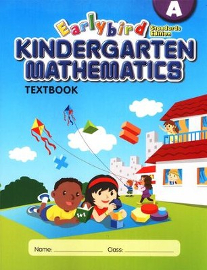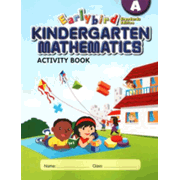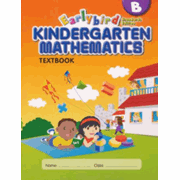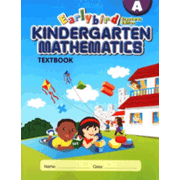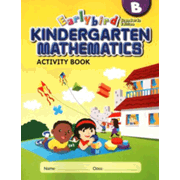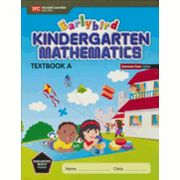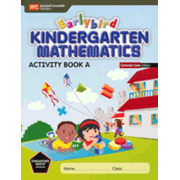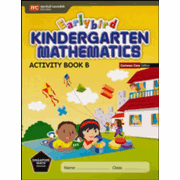Like Singapore Math's very popular Primary Mathematics program, Earlybird Kindergarten Mathematics was first published for schools in Singapore. It consists of parts A and B and can serve as either a one- or two-year program for pre-kindergarten and kindergarten. Parts A and B both have a student text, an activity book, and a teacher’s guide.
There are two versions of the program from which to choose: the Common Core Edition and the CA (California) Standards Edition. The CA Standards Edition covers additional topics such as length, size, time, and money, so those editions have more pages and cost a bit more.
Following are the tables of contents for both editions so you can see what each version covers.
Standards Edition
- A
- Unit 1: Match and Sort
- Unit 2: Numbers to 5
- Unit 3: Numbers to 10
- Unit 4: Order
- Unit 5: Shapes
- Unit 6: Patterns
- Unit 7: Length and Size
- Unit 8: Weight
- Unit 9: Capacity
- Unit 10: Compare Sets
- B
- Unit 11: Compare Numbers
- Unit 12: Numbers to 20
- Unit 13: Number Bonds
- Unit 14: Addition
- Unit 15: Subtraction
- Unit 16: Addition and Subtraction
- Unit 17: Numbers to 30
- Unit 18: Time
- Unit 19: Numbers to 100
- Unit 20: Money
Common Core Edition
- A
- Unit 1: Matching and Sorting
- Unit 2: Numbers to 5
- Unit 3: Numbers to 10
- Unit 4: Ordering Numbers
- Unit 5: Shapes
- Unit 6: Patterns
- Unit 7: Comparing Sets
- Unit 8: Measurements Kindergarten Curriculum Map
- B
- Unit 9: Comparing Numbers to 10
- Unit 10: Numbers to 20
- Unit 11: Number Bonds to 10
- Unit 12: Addition to 10
- Unit 13: Subtraction to 10
- Unit 14: Addition and Subtraction
- Unit 15: Numbers to 100
Brief instructions are given on each page of the textbooks. Answers are fairly obvious, so you really don’t need the pricey teacher’s guides.
These courses appeal to many types of learning styles for different reasons. Their colorful layout and cartoon-style illustrations make both textbooks and activity books visually appealing. Discussion and occasional storytelling should appeal to social learners. An optional set of ten storybooks can be used for the storytelling aspect, or you can tell the stories in your own words—or skip them since the storybooks are not required. The frequent use of hands-on objects is helpful for those who benefit from learning with concrete objects.
Frequently, the lessons tell the teacher to use objects to present new concepts and to work on previously introduced concepts. Generally, these objects are easily obtainable items such as counters, plastic bottles, a bucket, bowls, clay, and plastic cups. These lessons transition from the use of concrete objects to pictorial representations of the concepts, then to abstract presentations with numbers and symbols. Children learn to write numbers early in the program.
The activity books reinforce the lessons with cut-and-paste activities and written responses such as circling the correct answer or writing a numeral.
You might be interested in the teaching help that is available with Wisdom Wonder Project’s online video lessons. These videos are not official products from Singapore Math.
This course prepares children well to begin the Primary Mathematics series.




